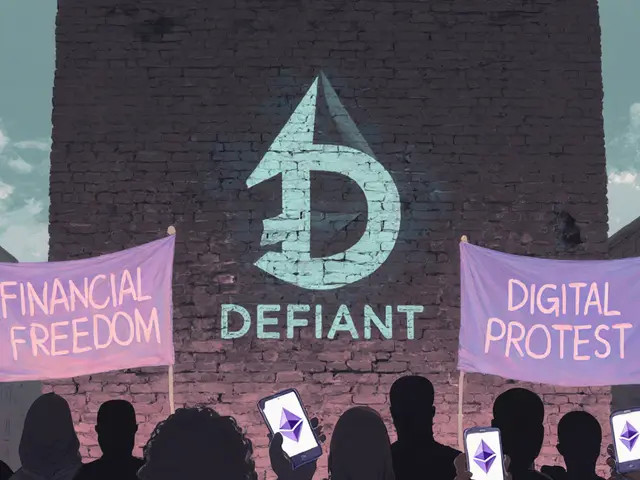Bitcoin mining
When working with Bitcoin mining, the process of validating transactions and creating new bitcoins by solving cryptographic puzzles. Also known as BTC mining, it powers the Bitcoin network and rewards miners with newly minted coins. This activity sits at the heart of the blockchain, and it Bitcoin mining drives both security and issuance. It relies on mining hardware, specialized machines that perform the hash calculations, produces a measurable hashrate, the total number of hashes computed per second across the network, and consumes significant energy, electric power needed to run the equipment around the clock. The whole system runs on a proof‑of‑work consensus, where miners compete to solve a puzzle and the first to succeed adds a block and claims the reward.
Hardware choices shape your mining results
The most direct factor is the type of hardware you deploy. Early miners used CPUs, then GPUs, but today the dominant players are ASICs—Application‑Specific Integrated Circuits designed solely for Bitcoin’s SHA‑256 algorithm. ASICs offer terahashes per second (TH/s) at a fraction of the power per hash compared to GPUs. When evaluating hardware, look at three attributes: hash rate (how many hashes it can process), power draw (watts consumed), and efficiency (watts per terahash). For example, a popular model might deliver 100 TH/s while pulling 3,250 W, giving an efficiency of 32.5 W/TH. Higher efficiency lowers operating costs, which directly boosts profitability, especially when electricity prices vary by region.
Beyond raw specs, reliability matters. Mining rigs run 24/7, so cooling solutions, firmware stability, and warranty support can affect uptime. Some miners opt for modular farms that let them swap out older units for newer, more efficient models without major downtime. This flexibility is crucial because the network’s difficulty adjusts roughly every two weeks, demanding constant hardware upgrades to stay competitive.
Another hardware‑related consideration is the physical footprint. Large farms need proper ventilation, fire suppression, and sometimes even custom power distribution to avoid bottlenecks. Small‑scale hobbyists often repurpose existing hardware in a garage setting, but they must balance noise and heat output against the limited hash power they can achieve.
Hashrate, difficulty and the economics of mining
Hashrate isn’t just a static number; it’s a moving target driven by the collective power of every miner worldwide. As more efficient machines join the network, the total hashrate climbs, prompting the protocol to increase mining difficulty so that blocks still arrive roughly every ten minutes. This difficulty‑hashrate loop creates a feedback system: higher difficulty means each individual miner’s share of the reward shrinks unless they boost their own hashrate.
Understanding this relationship lets you estimate potential earnings. Online calculators take your hardware’s expected TH/s, your electricity cost per kilowatt‑hour, and the current difficulty to output a daily profit estimate. If the calculation shows a negative margin, you either need cheaper power, more efficient hardware, or to wait for a price rally. Historically, Bitcoin’s price spikes have compensated for higher difficulty, but relying on price movements alone is risky.
Energy consumption and its impact on profitability
Energy is the biggest recurring expense for any miner. Prices differ wildly—some regions charge under $0.05/kWh, while others exceed $0.20/kWh. Mining farms often locate near renewable sources, hydropower, or excess industrial energy to cut costs. The amount of energy you use can also affect public perception and regulatory exposure.
Environmental concerns have sparked debates worldwide. Critics point to the sheer electricity draw—ranking Bitcoin’s consumption alongside small nations—while proponents argue that a growing share of mining power now runs on renewables. If you’re planning a large operation, consider the carbon intensity of your local grid; a lower‑carbon mix can improve both your public image and potential tax incentives.
From a profitability angle, you can improve energy efficiency by optimizing cooling (using ambient air, liquid immersion, or waste‑heat recovery) and by running hardware at its sweet spot—often slightly below maximum load to extend lifespan and reduce power spikes. Some miners even sell excess heat to nearby facilities, turning a cost into a revenue stream.
All these factors—hardware specs, hashrate dynamics, and energy costs—interlock to define the bottom line of Bitcoin mining. By grasping how each piece influences the others, you can make smarter equipment choices, locate your operation in the right jurisdiction, and time your entry or exit based on market signals.
Below you’ll find a curated set of articles covering everything from detailed hardware reviews and hash‑rate trends to tax implications and regional regulatory updates. Dive in to sharpen your knowledge and stay ahead in the ever‑evolving world of Bitcoin mining.

The Kosovo crypto mining ban, born from an energy crisis, evolved from a total shutdown to a conditional green‑energy allowance, reshaping local crypto regulation and offering lessons for other nations.
Jonathan Jennings Apr 29, 2025




